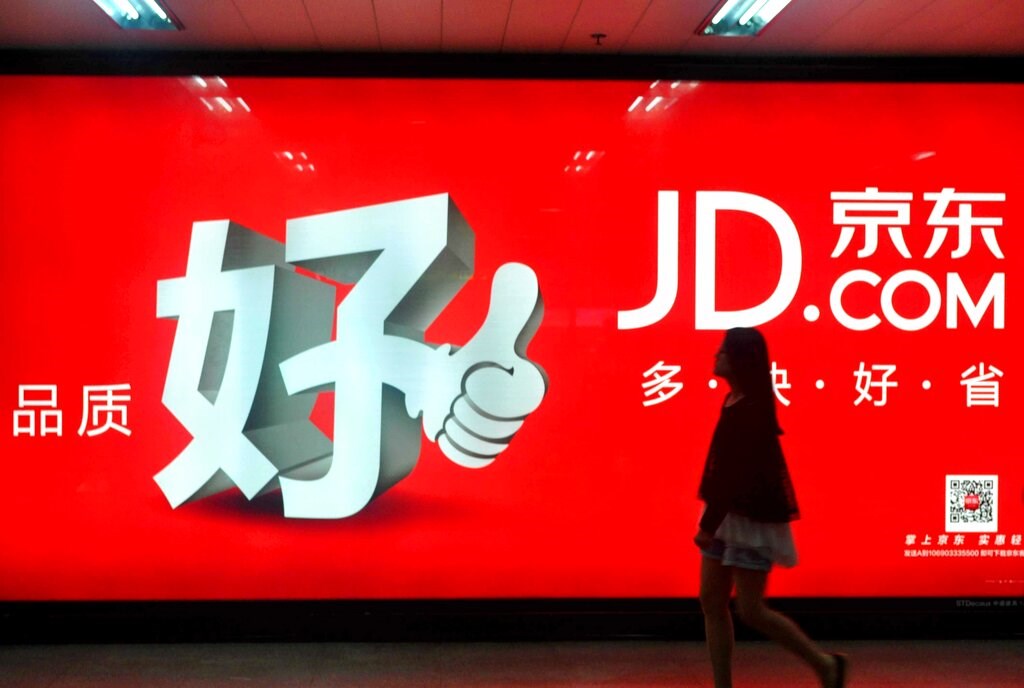
China looms larger than ever on the world stage and in investors' portfolios. The country's economy has grown to become the second-largest on the globe, and its influence has expanded beyond its borders. But decades of rapid economic expansion haven't translated to commensurate gains for investors.
The Chinese stock market has evolved. In recent years, it has opened up to the outside world. The inclusion of mainland-listed China A-shares in major index providers' mainline indexes is perhaps the most prominent example of the opening of the Chinese capital market. The Chinese stock market has also become more dynamic. Some of the world’s largest technology companies, like Tencent (TCEHY) and Alibaba (BABA), call China home. And in 2019, the Shanghai Stock Exchange STAR Market was established as China's equivalent to the Nasdaq: a hub for China's most innovative firms to raise equity capital.
But as much has changed in China, much remains the same. The Chinese government continues to exert control over economic activity, as evidenced by its recent efforts to pull the plug on for-profit private tutors. The country's reliance on debt to fuel its growth was again in focus as property developer Evergrande Group edged toward a potential default. So, while opportunities abound, so do risks--big ones.
Investors can't ignore China, but they should be choosy when investing there. They may simply decide the risks aren't worth it, or that being more selective--investing in a narrower slice of the market or partnering with an active manager--is best.
Where's the Growth?
From 1993 through 2020, China's gross domestic product grew by more than 9% per year. Surely that sort of growth translated to fabulous returns for investors in Chinese stocks, right? Wrong. Over that same span, the MSCI China Index gained just 2.71% on an annualized basis. Chinese stocks' returns were equally or even more disappointing relative to other major markets. During this 27-year period, the MSCI USA Index compounded at 10.37% annually, the MSCI Emerging Markets Index 7.95%, and the MSCI EAFE Index 6.65%. Exhibit 1 plots the relative performance of the MSCI China Index to each of these three, and it isn't a pretty picture.

You Keep Saying "China" … I Don't Think That Means What You Think It Means
It has long been known that the link between economic growth and stock market returns is weak at best and may even be negative. [1] There are a variety of explanations for this. The strongest, in my opinion, is that beginning-of-period valuations are the most meaningful predictor of future returns. But there are other, more fundamental forces at play, too. One that is particularly relevant to the case of China, cited by finance professor Jay Ritter, is that "a country can grow rapidly by applying more capital and labor without the owners of capital earning higher returns." Many investors in Chinese stocks can probably relate.
Investing in Chinese stocks is complicated. There are A-shares, B-shares, H-shares, Red-Chips, P-Chips, and some U.S.-listed ADRs, all of which may be members of a litany of different benchmarks. Defining the Chinese stock market isn't easy, and depending on how you define it, you might come to very different conclusions about its prospects and performance.
Exhibit 2 shows the dispersion of the rolling 12-month returns among four exchange-traded funds investing in Chinese stocks. This spread peaked in May 2015, when the difference between Xtrackers Harvest CSI 300 China A ETF's (ASHR) 12-month return and SPDR S&P China ETF's (GXC) registered at 95 percentage points. What a difference a definition makes!

ASHR tracks the CSI 300 Index, which consists of China A-shares. GXC is underpinned by the S&P China BMI Index, which invests in the entire alphabet soup of Chinese share classes. In 2015, a debt-fueled stock-buying binge driven by retail investors in mainland China pushed China A-share-focused ASHR up to levels well above its more broadly diversified counterparts--which had yet to include those shares. This episode is a prime example of the importance of knowing what it means to invest in "China."
Is That It?
Have you ever seen the "Mona Lisa" in person? Do you remember the anticipation as you walked down that long, cavernous hallway in the Louvre? Then, you turn the corner. Was your first reaction like mine? I remember saying to myself, "Is that it?" My first impression of what is arguably the most famous painting in the world was that it was much smaller than I'd expected. Similarly, while China looms large in our minds, its footprint in most investors' portfolios is still fairly small despite its growth.
Exhibit 3 puts the size of the Chinese stock market into perspective. Chinese stocks have grown to represent a larger portion of global markets over the past decade. In October 2011, they made up just over 17% of the MSCI Emerging Markets Index. At the end of September 2021, that figure had grown to nearly 34%. Chinese stocks' share of the MSCI All Country World Index grew to 4.1% from 2.2% over this same time frame. Their share of a market-cap-weighted 60/40 stock/bond portfolio expanded to 2.4% from 1.3%. So, in the context of a diversified portfolio, stocks that call the world's second-largest economy home still play a small part. This will be important to remember the next time mainland markets melt down like they did after Chinese retail investors ran for the exits in 2015.

Fish in a Barrel
Fettered access, government interference, and an investor base that skews heavily toward retail traders make the Chinese stock market a target-rich environment for savvy investors. It may well be the only major market where a majority of professional investors regularly beat their benchmarks. In the latest Morningstar China Active/Passive Barometer, my Shenzhen-based manager research colleagues found that three fourths of actively managed diversified Chinese stock funds available to Chinese investors managed to both survive and outperform their average passive peer over the prior decade.[2] Just 19% of actively managed U.S. stock funds can claim the same over the 10 years through June 2021. Clearly, there are ample opportunities for active managers to add value in China.
Exhibit 4 features three Morningstar Medalists that invest in Chinese stocks. Each delivered the goods over the 10 years through September 2021, handily outperforming iShares MSCI China ETF (MCHI).

Matthews China (MCHFX), which earns a Morningstar Analyst Rating of Gold, benefits from significant personnel and other advantages over its competition. Lead manager Andrew Mattock and comanager Winnie Chwang are seasoned and skilled China-stock experts. They have a total of 31 Asia-investing authorities to draw on for support, and the group includes many China specialists. This fund enjoys a strategic edge over most rivals, because the Matthews growth discipline is sound, differentiated, and proven. Mattock and Chwang have earned strong results here: This fund has posted better total and risk-adjusted returns than its typical peer and the MSCI China Index during Mattock's tenure. It also has relatively modest costs that give it an ongoing edge over most rivals. This fund is a superior source of China exposure for investors who have long time horizons and can handle the volatility that comes with all single-country emerging-markets funds.
Silver-rated AMG Veritas China (MMCFX) is led by Ezra Sun, who managed the UCITS version of Veritas' Asian strategy since its 2004 inception, with outstanding results. He is aided by three analysts, each of whom has been with Veritas for more than a decade and has 20 years of industry experience. Sun and his team focus on five big-picture themes (green Asia, healthy Asia, connected Asia, efficient Asia, and aspirational Asia), encompassing such areas as renewable energy, e-commerce, and luxury goods. Sun tries to temper the risk inherent in Chinese stocks by seeking out "high-quality" firms and exercising valuation discipline. But it's also a high-conviction strategy, with only 20–40 holdings, so a few stocks can have a big effect on returns.
Silver-rated Matthews China Dividend's (MCDFX) lead manager Sherwood Zhang and comanagers Yu Zhang and Joyce Li employ a unique dividend-driven strategy that has demonstrated its merits elsewhere. They pursue attractively priced firms with clear dividend policies--and commitment to growing their payouts--as well as strong cash flows, balance sheets, and franchises. As benchmark-agnostics, they distinguish the portfolio through atypical diversification across styles. Unlike peers, which generally confine themselves to large companies and often focus on growth stocks, this fund embraces small- and mid-cap stocks and invests across the value-growth spectrum.
1) Ritter, J.R. 2005. "Economic Growth and Equity Returns," Pacific-Basin Finance Journal, Vol. 13, No. 5, P. 489.
2) https://direct.morningstar.com/research/doc/1041595/The-Morningstar-China-Active-Passive-Barometer-May-2021. (Available to Morningstar Direct subscribers.)
Disclosure: Morningstar, Inc. licenses indexes to financial institutions as the tracking indexes for investable products, such as exchange-traded funds, sponsored by the financial institution. The license fee for such use is paid by the sponsoring financial institution based mainly on the total assets of the investable product. Please click here for a list of investable products that track or have tracked a Morningstar index. Morningstar, Inc. does not market, sell, or make any representations regarding the advisability of investing in any investable product that tracks a Morningstar index.




















